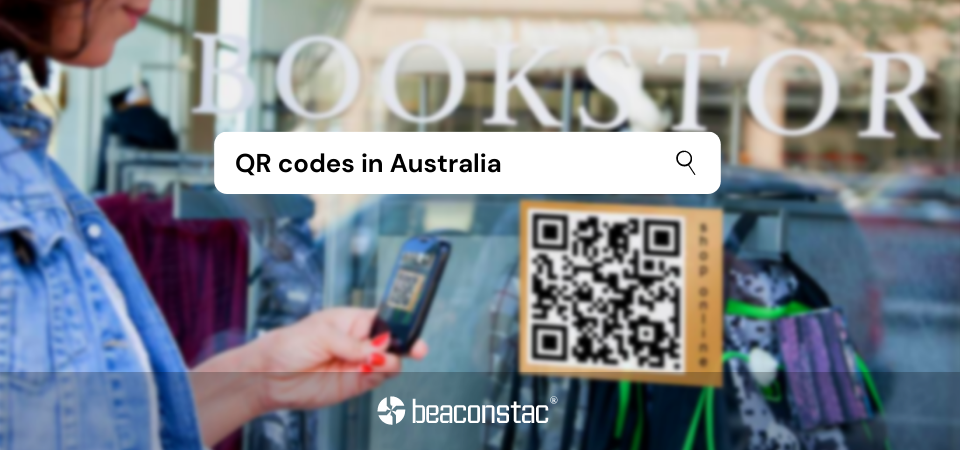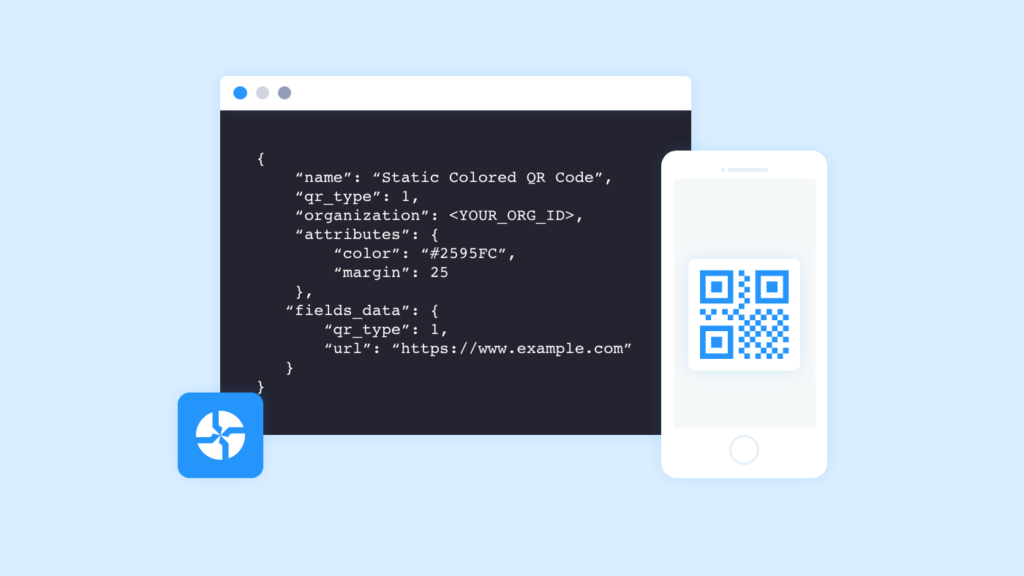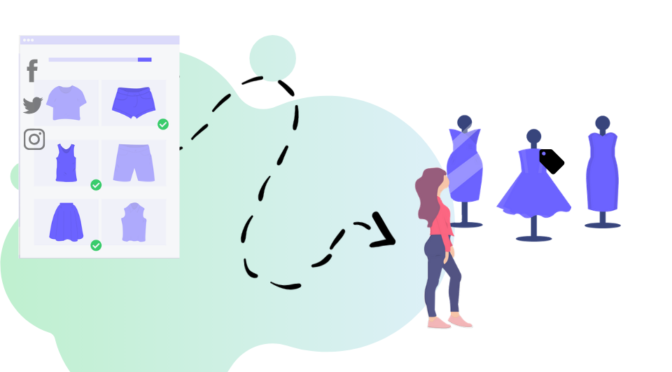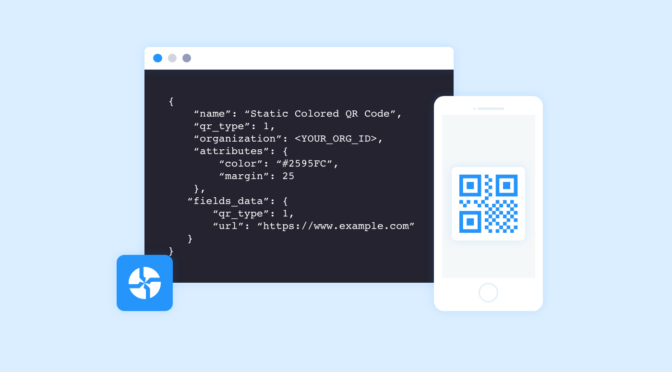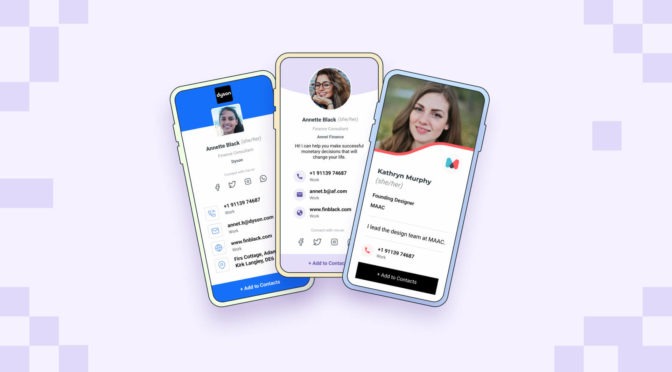As consumers, how many times have we checked a product because the product packaging design caught our attention?
When you decide to buy a new product, does the packaging design influence your decision?
When it comes to product packaging, first impressions are crucial, and apps for animation can be key tools in crafting that perfect introduction to your product.
Effective and attractive packaging plays a vital role in marketing a product and making a powerful impact on consumers. According to Packaging of the World, 70% of consumers form their impression of a brand based on packaging.
Puma’s “Clever Little Bag” was a fantastic green packaging concept developed a few years back. The package came with a rigid cardboard insert that contained a pair of shoes. The bag starts as a shoe container box, and once you remove the shoes, it converts itself into an everyday tote bag.

Packaging, when done right, is what sells your product; it’s more than adding a logo and abstract colors.
Designing a clever and effective product packaging is no easy task. Using the right product packaging software is as important as curating a product design. It helps consumers understand what the enclosed product entails.
In this ultimate guide to product packaging design tools, let’s look at the five best product packaging software to help your product convey the story you want –
Ten best product packaging software to help you curate the perfect product packaging design
#1. Canva

Canva is one of the most popular and powerful design tools for product packaging.
Whether you already have a pre-designed template or want to start from scratch, Canva helps you curate the perfect visual assets for your packaging with ease.
With over 250,000+ templates to design various product packaging designs and even share it on various outlets, Canva is one of the best software to use.
To design the perfect packaging design, pick the right packaging size, add elements, images, or vector designs to your canvas, edit the design, and download it to be printed on your product.
James Black, Co-founder of DesignHub, says, “When it comes to creating designs for social media and YouTube graphics, there a few tools that can match Canva’s offering. The social teams of DTC brands can use it to create great-looking designs quickly and easily, and at scale. Whether that’s creating a design from a blank canvas or using one of their thousands of predesigned templates for all the major social platforms, Canva is a handy online tool that will undoubtedly become a significant tool in their arsenal.
They’ve also introduced collaboration features as part of the product, so whether teams are in-house or remote, they’ll be able to work on creating quality designs in Canva together.”
Highlights of Canva’s features include –
- Over 250,000+ ready made templates
- User-friendly interface
- Flexible customization
- Label size guide
- Free delivery
User rating – 4.7/5
Pricing – starts from $12.99 per month
#2. Adobe Illustrator

Adobe Illustrator is another product packaging software known for its industry-standard features that have dominated the product marketing landscape for years now.
Adobe Illustrator is a vector-based design software that allows brands to experiment, create, and curate the best product packaging designs with attractive visuals.
The software comes with extensive library tools, extensions, and brushes that can be used to elevate the product design. Not just that, the software is straightforward to use.
Adobe Illustrator features a myriad of tools to automate the creative process intuitively to help brands focus on more significant tasks at hand.
June Escalada, a graphic designer and founder of IllustratorHow, vouches for Adobe Illustrator. She says, “I create all designs such as logos, colors, fonts, layouts, and graphics in Illustrator, and when I have the layout ready, I do a packaging mockup in Photoshop to see how it looks.”
“What makes an excellent design isn’t just the tools; but also the elements. Using eye-catching fonts, graphics, and colors will make your package design stand out, and customers are more likely to purchase your product.
I love to use bright colors for packaging because they are eye-catching and give an active feeling. But depending on your product, if you use eco-friendly material for packaging, the simple black & white would be more than enough.”
Highlights of Adobe Illustrator’s features include –
- Unlimited resources for easy packaging design
- An end-to-end supply of toolset
- Round the clock customer support
- User-interface similar to Adobe Photoshop
- An abundance of tutorial guides
User rating – 4.6/5
Pricing – starts from $19.99 per month
#3. Appy Pie Design

Appy Pie Design is one of the most popular and powerful design tools for product packaging. It stands out as a top-notch platform, offering a wide range of features that elevate its status in the digital design realm. Appy Pie Design ensures a seamless user experience, making it a go-to choice for beginners and seasoned designers.
One standout tool is the AI Video Generator, a game-changer in the design landscape. This innovative feature leverages artificial intelligence to craft captivating videos with minimal text input. Users can effortlessly transform ideas into engaging visual stories by providing text prompts, enhancing their online presence.
Highlights of Appy Pie Design features include-
- Simple templates and innovative AI features like an AI Text-to-Image Generator, Text to speech, AI Photo Enhancer, AI Video generator, and many more.
- Extensive template library.
- Intuitive drag-and-drop interface.
- Affordable and accessible for all
User rating – 4.6/5
Pricing –
- 5 free credits on trial
- 15 credits/month after subscription
#4. Inkscape

If your brand is on a budget, Inkscape is the right tool to help you craft the perfect design for your product.
The tool is entirely free and hosts many features and tools that make Inkscape a fantastic tool. In addition, the software is open-source, making it easy for designers to add more functionality to the base program with a large number of plugins.
Inkscape is perfect for creating any type of design, right from a tiny logo to packaging design to even banners.
Highlights of Inkscape’s features include –
- Great support forums
- High-quality vector graphics
- Free of cost
- Enhanced customization with plug-ins
- Open-source
User rating – 4.4/5
Pricing – Free
#5. CorelDRAW

If you are not very familiar with graphic design tools and the technicality of using them, then CorelDRAW is an excellent product packaging design software that you should consider.
While still a solid vector-based graphic design software, the user interface is far more intuitive because of its clean design.
However, compared to Adobe Illustrator and Canva, the software is far more limited in terms of its functionality as it focuses more on simple designs and infographics. Nevertheless, the tool can still be used for product packaging design if simplicity and user interface are crucial for your brand.
Highlights of CorelDRAW’s features include –
- A solid library of tools and features
- Intuitive interface
- Full layer control
- Not very resource-intensive
User rating – 4.3/5
Pricing – starts from $35.97 per month
#6. Affinity Designer

Affinity Designer was initially used exclusively for MacOSX, but it has slowly migrated to the Windows platform.
Product packaging designers who are well-versed in Adobe Illustrator/Adobe Photoshop or other free alternatives to Photoshop will find the UI very familiar.
Affinity Designer is perfect for product packaging design – it contains all the tools you may ever need, including font bundles, brush packs, illustrators, and more.
Highlights of Affinity Designer’s features include –
- A myriad of bonus features such as fonts, brushes, and illustrations
- Portable device compatibility
- Full layer support
- Vector-based design
- Supports both Windows and Mac OS
User rating – 4.6/5
Pricing – Starts from $12.31 per month
#7. DesignNBuy
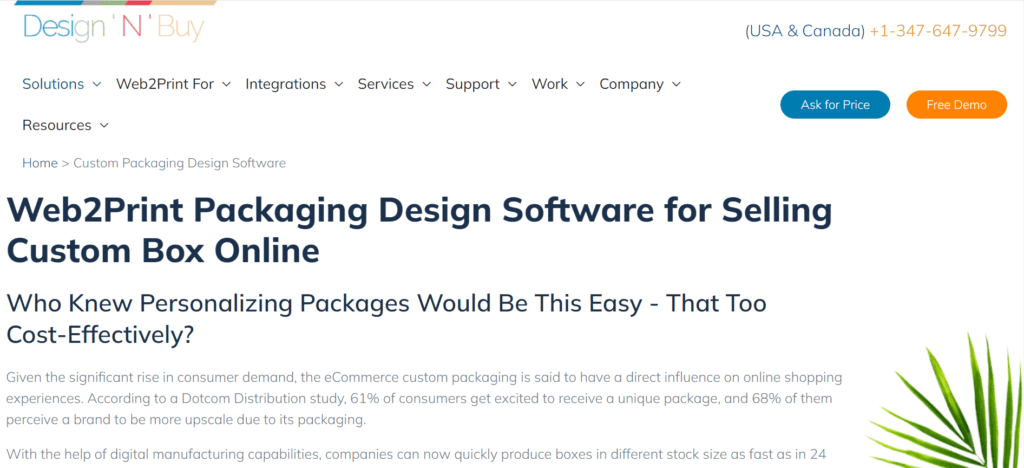
Design’N’Buy is a product packaging design software that is apt for B2B, B2C, and trade printers. You will be able to deliver an excellent first impression to your print customers right off the bat, as well as give your customers the freedom to upload their elements like text, images, clipart artworks, or photos they want to use, and even design the templates and specify the print materials they want to order.
Highlights of Packaging Design Software’s features include –
- Pre-configured templates ready store with packaging models
- Feature-rich design to add text, images, clipart, and more
- Add QR Codes and shapes with an easy object editing panel
- Live 3D preview and live pricing for easy checkout
User rating – 4.6/5
Pricing – Free trial option
#8. Brush Your Ideas

Package Design Software by Brush Your Ideas strikes the right balance between ease of use and features. The software is built with a mobile-first approach, and customers can seamlessly customize packages from any device. Both B2B and B2C businesses can leverage the tool to offer product customization to their customers.
Business owners can define the price of each customization which end-users can view in real-time.
Highlights of some of the features of the Packaging Design Software-
- Ready-to-use design templates.
- Extensive library of clipart, artwork, and fonts.
- In-built artwork proofing features.
- Other features include QR codes, live previews, form-based customization, and custom shapes.
User rating – 4.77/5
Pricing – Custom pricing
#9. Glorify

Glorify is an easy-to-use yet powerful graphic design tool that allows you to plan, design, launch, and analyze all your big ideas in one place. It makes design accessible to all. Entrepreneurs, marketers, agency owners, designers, and just about any busy professional can use this tool to create aesthetic images that convert.
It is also super valuable for eCommerce enthusiasts who need a simple, quick solution to make their products stand out in a saturated market. With simple tools for beginners and advanced features for designers, Glorify provides a great alternative to other design tools out there.
Highlights of Glorify features include –
- Has thousands of fully customizable ready-made templates
- Offers fully customizable 3D mockups and mockup scenes
- Has branding tools such as a logo maker, brand kits and template bundles
- Collaborative features and workspaces make it ideal for teams
- Has an ambitious roadmap with several future features lined up
- Has amazing customer support
User rating – 4.6/5
Pricing – starts at $29.99/month
#10. Pacdora

Pacdora is a powerful one-stop 3D packaging design tool. It has a rich set of design resources, 3D previews, and 3D online rendering. Pacdora provides a large library of mockups, templates and dielines. They meet packaging industry standards and save designers’ time by providing suitable resources.
Pacdora has a unique 3D rendering capability, which allows the packaging rendering to be as close as possible to commercial studio effects. At the same time, Pacdora is simple and easy to understand. So, you don’t need design experience to use it.
To design a best-selling package, just pick suitable templates or mockups in Pacdora. Then, upload your design elements and adjust the 3D scene. You can change the display angle, light, shadow, and other product details until satisfied.
Highlights of Pacdora’s features include
- over 4900+ packaging mockups, templates and dieline ready to use
- Supports 100% customization of package size
- Efficient, simple and easy-to-use interface
- Powerful 3D rendering capabilities
- Supports the export of high-resolution images, MP4 videos, and other file formats
User Rating – 4.9/5
Pricing – Starts from $29 per month
#11. Placeit

If you’re looking for a platform where you can create all your branding designs, Placeit is a great tool. With more than 50K templates and a growing library of designs made by professionals, you can create eye-catching images every day. You can make everything from logos and videos to your social campaign with branded images in minutes.
You also get access to all kinds of mockups and design templates with the mockup generator and video creator like Vidico Sydney.
Highlights of Placeit features include:
- Unlimited downloads
- Fonts and audio selection
- New templates are uploaded every day
- Extremely easy-to-use
- Professional graphics for eye-catching templates for your campaigns.
- +85,000 exclusive design, music, and photo assets.
- Constant updates of the graphics and the tools
- Free tools available for everyone
- High-resolution graphics
User rating – 4.4/5
Pricing – starts at $7.47 per user/ month
#12 RenderForest

Renderforest is one of the best Placeit alternatives. With a comprehensive suite of tools for creating stunning videos, animations, branding materials, mockups, presentations, graphics, and professional websites, Renderforest is your one-stop solution for business growth.
Most valued features
1. Collaboration Tools
2. Search/Filter
3. Drag & Drop
4. Data Import/Export
5. Customizable Branding
6. Content Management
7. 2D Drawing
8. 3D Objects
Pricing: Starts from $9.99/mo
#13 Simplified
Simplified is a leading graphic design tool that empowers users to create stunning visuals with ease. Known for its user-friendly interface, Simplified caters to both beginners and experienced designers, offering a range of features that streamline the design process. From product packaging to social media graphics, this versatile platform ensures high-quality results every time.
One of the standout features of Simplified is its AI Video Generator, which transforms text into engaging videos effortlessly. This innovative tool allows users to create captivating video content by simply inputting text prompts. With features like customizable templates, intuitive editing options, and the ability to add animations, the AI Video Generator significantly enhances the storytelling capabilities of designers, making it an essential asset for anyone looking to elevate their visual content.
Simplified also offers an impressive suite of AI tools designed to enhance productivity and creativity. Key offerings include the AI Text-to-Image Generator, AI Photo Enhancer, AI Logo Maker, AI Content Generator, AI Copywriting Tool, and AI Image Background Remover. These tools work seamlessly together to support users in achieving professional-quality designs quickly and efficiently.
User Rating: 4.6/5
Pricing:
- Free trial available with limited features
- Starting at $24/month for access to all tools and features
#14. Design.com
Design.com is an all-in-one branding platform that is made for beginners and non-designers. It offers thousands of beautiful customizable templates for different branding and marketing materials — fit for any industry or any style.
Design.com also offers AI design tools for a faster editing process. Busy professionals and business owners can use their AI Logo Maker, AI Background Remover. AI Business Name Generator, and AI Domain Name Generator to help easily build their brand identity.
Highlights of Design.com features include:
- Fully customizable templates
- Easy-to-use and intuitive controls
- Bespoke fonts, shapes, and graphics
User Rating – 4.6/5
Pricing: Offers Free templates, while Premium templates start at $3/month
#15 DocHipo
DocHipo is one of the most innovative and powerful document design tools that you can use to design product packaging. All you have to do is set a custom dimension for your desired packaging design and use text, images, and relevant design elements with an easy-to-use drag-and-drop editor. It offers fonts, unlimited stock images, shapes, and on-theme vector assets such as illustrations, icons, stickers, and more to bring your packaging design ideas to life. Furthermore, you can upload custom fonts or images from your device. Its Brand Kit feature helps you save and instantly apply your logo, fonts, color scheme, or visuals to keep your product packaging on-brand.
DocHipo’s AI tools let you craft professional, casual, or witty messages for your packaging design copy, translate your packaging content to reach a global customer base, or generate unique visuals appropriate for your design. You can also add QR codes to your designs to provide quick and easy access to your product information.
DocHipo ensures a smooth and effortless design experience, admired by beginners and professionals alike.
Highlights of DocHipo’s features include –
- Uncluttered and user-friendly interface
- AI tools, including AI writer, text-to-image generator, background remover, and AI translator
- Premium-quality themed vector graphics
- Customization flexibility
- Ability to add QR code
- Brand Kit and company templates feature
- Supports downloading of high-quality print-ready file format
- Plenty of design guides
User rating – 4.9/5
Pricing – The plan starts at USD 7.5 per user/month and is billed yearly. However, if you have a large team, you can opt for the Pro Unlimited plan, which offers Unlimited Users/month for USD 225.
Product packaging design software recommended by designers
#1. Artboard Studio
Artboard Studio is the first web-based design tool that focuses on creating product mockups for brands with no prior knowledge of graphic design software.
The tool helps you create product presentations effortlessly that are explicitly meant for branding and marketing designers.
Artboard Studio helps you work with several Sketch plug-ins to help save time and create better-looking designs.
Juan Pablo Sarmiento, CEO at ByPeople.com, says, “As a company that works in the design business, we would like to recommend Artboard Studio, which is a useful tool to manage package design, among its other features.
This helpful resource allows designers to generate mockups based on a library with hundreds of models that include packaging mockups. And as expected, you can customize texts, images, logos, and color palettes. Artboard Studio offers you a wide selection of already-made templates. As it is a mature tool, it works well when exporting visual pieces in different vector formats that product designers commonly use.”
#2. Creatopy (Formerly Bannersnack)
Creatopy has advanced automatization, animation, and collaboration features that help DTC brands design on-brand ads and creatives for social media, display advertising, and more. It’s the ideal platform for teams that want to optimize their creative workflow and cut down the time spent on ad production.
Creatopy is a cloud-based banner ad creation tool that features a plethora of tools to design and create banner ads and manage and implement advertising campaigns across several online platforms.
Designed for medium to large businesses, Creatopy is easy and straightforward to use and can support various formats such as HTML5, Flash, JPG, GIF, or PNG.
The software also comes with an analytics tool to help brand managers gather vital information such as statistics or demographic data.
David Attard, Digital Consultant and Web Designer at CollectiveRay says, “Our designing journey usually uses paper and pencil where we give a rough outline of what we are looking for our product to look like. Our graphic designer then switches to Creatopy, a graphic designing tool.
It’s a cloud-based and collaborative graphic design platform, which means once a rough outline is prepared, the team sits down to evaluate and give feedback. We usually create static visuals, and Creatopy has the necessary tools to support our needs. The best part is that you can create HTML5, GIFs, or ads and visuals at a much economical rate.”
#3. Picmaker
Picmaker is a DIY design platform that lets anybody create stunning professional designs in minutes that is absolutely free to use. With over 700+ templates, 100,000+ graphic elements, and inbuilt tools to create YouTube banner ads, business cards, logos, product designs, and more Picmaker is preferred by most designers.
Picmaker provides tens of thousands of readymade templates for all design needs. With access to more than 100 million images and design objects, Picmaker enables D2C brands and users to create designs with minimal experience.
How to design product packaging
Step 1: Pick a product packaging design software
Before you start designing your product packaging, you need to decide on a design tool that suits your needs best.
Suppose you’re visualizing your packaging design in 2D. In that case, you can use any tool to curate the artwork and send it to the packaging manufacturer in a vector file. Vector files are scalable and help with rendering your 2D design into a 3D format.
But, if you wish to visualize your packaging in 3D, we recommend you use a plugin for your vector software that lets you design your product packaging in 3D format.
Step 2: It’s time to create a dieline
A dieline is a flat product packaging design template that helps the manufacturer understand which parts need to be cut and folded. This is different from the artwork you submit to the manufacturer and allows them to assemble the packaging correctly.
Packaging designers and illustrators can create a dieline using vector software with the help of lines and shapes.
Step 3: Select the right packaging material
Explore the different types of materials before you start designing your packaging. For example, if you’re selecting a box, determine whether you want to use a setup box or folding carton, depending on the type of product.
Folding cartons are valid for packaging food products and household items. You can use it for packaging multiple types of products.
On the other hand, setup boxes are more expensive to manufacture and are widely suited for more high-end products like jewelry, retail items, and gifts.
Besides boxes, there is a range of other materials you can choose from for your packaging design. If the design is for shapes like tubes, glass jars, pouches, or bottles, these require 3D modeling so you can predict how the design will look on curved surfaces.
If the material is bags or labels, these are relatively easier to design and don’t require much effort from the packaging designer’s end.
Step 4: Design your product packaging
Now that you’ve fixed the material, it’s time to design your packaging. But, before you begin, there are a few aspects you need to keep in mind that’ll help during the design process.
- The brand name and logo should be prominently displayed on the packaging. This is the most important aspect of your design and needs to be emphasized accordingly. Without this, consumers won’t be aware of what your product or brand is and will skim over to other products.
- Keep your target audience in mind when designing your product packaging. Research your target market and demographics, see which designs, fonts, and imagery appeal to them most before working on the design.
- Design your product packaging in a way that there’s extra space assigned for barcodes, promotional stickers, and images that help make the packaging more engaging. For instance, if your brand plans to add a QR Code on the packaging, you can leave a dedicated space for it for future marketing campaigns.
Step 5: Create a mockup
Create a 3D mockup of your packaging design so that you can visualize and get a better idea of what it would look like in real life. This is a very vital part of the packaging design process.
You can either create a digital mockup image using design software or print your design on paper and assemble it according to your dieline. This helps you understand which parts of your design will be visible to consumers when sitting on the shelves. It also aids in figuring out if the text size is readable enough. Based on this, you can tweak your digital design and finalize the mockup. Creating a mockup is simple and you and you can use an online solution such as Quicktools by Picsart to get it done in your browser quickly.
Step 6: Print your design
Once your mockup is ready, take it to the printer and show them how you would like the packaging to look based on the dieline. If you want to add some textured print finishes to your packaging design template, there are a variety of options you can consider, such as – flat varnish, embossing and debossing, lamination, or die cutting.
Share the files of your artwork and dieline both in original and print-ready formats.
Once the printing is complete and the packaging is ready, ensure you do a thorough quality check of every single package. Look out for misprints or color changes and have those particular packages replaced.
How does packaging design motivate consumers to buy a product?
When a consumer walks into a store or scrolls through an e-commerce website, there are a wide array of products available for them to choose from. It’s the role of your product packaging’s design to stand out and catch the consumer’s eye.
According to Drupa’s article, research shows that the packaging determines at least a third of product decision-making.
A good packaging design captures consumers’ attention and helps them make easier and quicker purchase decisions. Whether it’s the colors, imagery, font, or logo on the packaging, all of these factors play an important role in getting the consumer to notice your product instantly.
For example, Greenomic, a German food brand, has a unique packaging design for their Good Hair Day organic pasta.
The packaging aims to attract consumers’ attention while sitting on the shelves in-store and highlight the product’s quality.
The brand has used a transparent window packaging design to show the natural color of the pasta and display it like strands of hair, which also gives it a storytelling effect.
How do customers most benefit from good packaging design?
#1. Faster and easier purchase decisions
The first thing a consumer would notice about your product is its packaging. If it grabs their attention among the many other products on the shelf, that is a win for your brand and the consumer because they were able to narrow down their search to your product.
Be it the text on the packaging, the illustrations displayed, or your prominent logo, these factors, along with personal preferences, help the consumer choose your product and make a swift buying decision.
Additionally, having a technology like an NFC sticker on your packaging that links to your brand’s website also aids consumers in their purchase decisions. It saves them the time to search for your brand’s website themselves.
#2. Increases brand recall
Consumers always prefer to purchase from a brand that they know. First impressions always matter, and that’s where your product packaging design comes into play.
When a consumer comes across your product and decides to purchase it, the brand name, logo, and packaging design will be something that they will remember.
You know how consumers see a large yellow M on red-colored packaging and know that the brand is McDonald’s? Similarly, an effective packaging design helps consumers associate with your brand more. This results in future repeat purchases and drives the number of sales.
#3. Higher levels of engagement
According to Gallup’s research, fully engaged consumers represent a 23% increase in profitability, revenue, and relationship growth.
Packaging design that engages the consumer is always a positive for your brand. When there’s an increase in the levels of engagement, the consumer can connect with the brand, which sways their buying decisions.
It could be anything from using quirky illustrations on the packaging to a QR Code that links to promotional content in the form of a game, quiz, video, app download, or an augmented reality experience.
All of these efforts enhance consumer engagement and go a long way in establishing brand loyalty.
What are the characteristics of a good packaging design?
Before you zero in on the important product packaging design features, it is important to understand the following factors –
- What are you selling?
- Who is your target audience?
- How are people purchasing your product?
Once you have the answers to these questions, go on with the designing process.
Phil Forbes, Marketing Specialist at Packhelp, shared his insights on the characteristics of good packaging design. He said, “We’re seeing more and more small brands leverage patterns – that might be a simple design that’s repeated on several sides of their packaging or a shape that echoes their logo, tessellated to create a second skin that covers every surface of the box.
Ultimately, this creates a much more eye-catching design than a simple box with a logo. In fact, some clever designers manage to pull off a complex pattern on their box, but still create a ‘minimalist’ feel.”
#1. Conveys a message to buyers

A good product packaging design must not only be attractive but should also be communicative. For example, the exteriors of a product should convey the information about the brand utility, quality of the product, ways to bring back the customer via engaging ways by leveraging QR Codes, NFC, or even augmented reality.
Good packaging design works as a silent salesperson that helps generate a demand.
#2. Enhances retail shelf life with protective layers

The purpose of product packaging is to protect the product from the exterior environment to increase its shelf life. Products should be packed so that their design should not hinder or damage the product from sun, rain, or dust.
A product typically gets hampered when transporting from the manufacturer to the shelf. Therefore, ensure that the product uses material that helps minimize the damage caused by transportation.
#3. Draws consumers to buy the product

As Renowned designer, Lindon Leader, said it best: simplify and be clear.
When considering the final design of a product, it is important to consider the wants and needs of the consumer. The primary goal of the product, after all, is to attract and engage with the consumers to encourage them to purchase the product.
Since first impressions are so important, a well-designed product design can go a long way in ensuring that the product reaches your customers.
Choose a style, color scheme, logo, and attractive designs that will appeal to customers and encourage them to pick up your product.
Do not overload your product with erratic colors and shapes that distract the customer from your product.
#4. Go green with sustainable packaging

With the importance of sustainability and global warming on the rise, consumers are increasingly wary of the products they buy and consume.
Leverage environmentally friendly materials to make an impact on the earth and help customers make a conscious choice to reflect their purchasing decisions.
Include recycling instructions and offer discounts for consumers who practice sustainability with your product packaging design via QR Codes.
#5. Share your brand voice clearly

Ensure that the product shares your brand voice clearly with precise branding and ad copy to help customers understand what your brand stands for.
Even the most generic brands make their brand purpose and message clear because it helps customers recognize the product swiftly.
If your brand sells potato chips, include that as the baseline for your product packaging design and steer clear from other ad copies so customers know that they are indeed buying potato chips and not another product.
The right packaging design tool is vital for your brand
Product packaging design is a very crucial aspect of drawing your target audience to your product. To create a good packaging design, you need the right design tools that let you visualize the product’s packaging before it hits the shelves.
No one packaging design tool fits every designer. It varies for every brand depending on requirements, brand guidelines, budget, and what appeals to target consumers.
Ensure that you explore all the various design tools for your packaging design. Try them out and choose the one that aligns with your brand’s goals.
This blog post was also contributed by Shweta Menon, who works as a Content Marketer at MobStac.
-
With brands expanding their presence on omnichannel platforms to reach more audiences, learn how QR Codes help brands sync their online and offline marketing strategies to close the loop seamlessly.
-
Trying to build a loyalty program for your brand? Look no further! Check out this complete guide on the best customer loyalty platforms to help pick the best one and foster long-term brand loyalty effectively.
-
Struggling to improve in-store sales and shelf performance rate for your brick and mortar retail store? QR Codes for planograms are the answer you’re looking for.
-
Looking for a design software that fits your requirements? Check out this detailed guide on product packaging design tools with helpful information on how to create an effective packaging design.
-
What led to the surge in the usage of QR Codes in Australia? Is it because of contact tracing or payments? What does the future hold? Let’s find out.
-
Want to know how to add a QR Code API to your app without complex troubleshooting? Read to find out!












